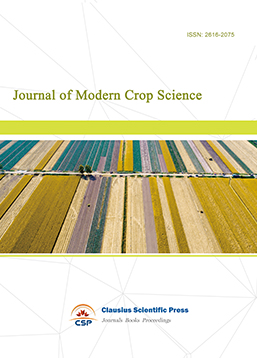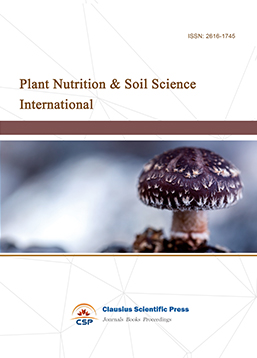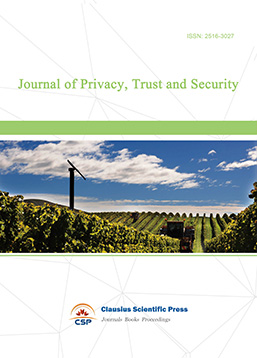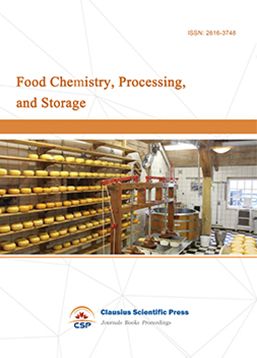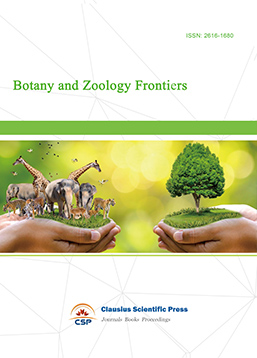Research Progress of Detection Methods in Tenuazonic Acid
DOI: 10.23977/afshn.2023.050108 | Downloads: 52 | Views: 1693
Author(s)
Chengrui Chen 1, Yunpeng Huang 1
Affiliation(s)
1 Hubei University, Wuhan, Hubei, 430000, China
Corresponding Author
Chengrui ChenABSTRACT
Since the 20th century, food safety has been widely valued by the people. Mycotoxins are an important source of biological contamination in food. Alternaria is one of the most common fungi that contaminate food. Its metabolite Streptococcal ketoic acid is one of the most important streptotoxin, which can widely contaminate vegetables, fruits and grains. In this paper, the pollution status, toxicological properties and detection methods of TeA were reviewed, and the future research direction was prospected, hoping to attract attention at home and abroad and promote the establishment of the national limit standard of Streptomyces toxin in advance.
KEYWORDS
Tenuazonic acid, immunoassay, rapid detection, research progressCITE THIS PAPER
Chengrui Chen, Yunpeng Huang, Research Progress of Detection Methods in Tenuazonic Acid. Advances in Food Science and Human Nutrition (2023) Vol.5: 60-68. DOI: http://dx.doi.org/10.23977/afshn.2023.050108.
REFERENCES
[1] Swinking. Study on detection technology of streptosporin in citrus and juice [D]. Chongqing: Southwest University, 2014. (in Chinese)
[2] Chen Yuemeng, Li Jianhua, Zhang Jing, et al. Simultaneous determination of three streptosporins in fruits by high performance liquid chromatography-fluorescence detection [J]. Analytical Laboratory, 2012, 31(6):70-73.
[3] King Ad, Schade J E. Alternaria toxins and their importance in food[J]. Journal of Food Protection, 1984, 47: 978-995.
[4] Jiang Liyan, Zhao Qiyang, Gong Lei, et al. Rapid detection of 5 streptosporins in citrus by ultra-high performance liquid chromatography tandem mass spectrometry [J]. Chinese Journal of Analytical Chemistry, 2015, 43(12):1851-1858.
[5] Man Yan, Liang Gang, Li An, Wang Dong, JIA Wenshen, Pan Ligang. Research progress of detection methods for streptosporin [J]. Journal of Food Safety and Quality Inspection, 2016, 7(02):453-458.
[6] Barkai-Golan R, Paster N. Mouldy fruits and vegetables as a source of mycotoxins: part 1[J]World Mycotoxin Journal, 2008, 1 (2): 147-159.
[7] Ostry V. Alternaria mycotoxins:an overview of chemical characterization, Producers, toxicity, analysis and occurrence in foodstuffs [J]. World Mycotoxin Journal, 2008, 1 (2): 175-188.
[8] Barkai-Golan R, Paster N. Mycotoxins in fruits and vegetables[M]. USA: Academic Press, 2008:86-94.
[9] Sauer D B, Seitz L M, Burroughs R, et al. Toxicity of Alternaria metabolites found in weathered sorghum grain at harvest[J]. Journal of Agricultural and Food Chemistry, 1978, 26(6): 1380-1383.
[10] Rosett R, Sankhala RH, Stickings CE, Taylor MEU, Thomas R. Studies in the biochemistry of microorganisms 103. Metabolites of Alternaria tenuis Auct:Culture filtrate products Bio chem J, 1957, 67:390-400.
[11] Stickings C E, Townsend R J. Studies in the biochemistry of micro-organisms. 108. Metabolites of Alternaria tenuis Auct.: the biosynthesis of tenuazonic acid[J].Biochemical Journal, 1961, 78(2):412-418.
[12] Celia F B, Ana J G, Cristina J, et al. Alternariol induce toxicity via cell death and mitochondrial damage on caco-2 cells [J]. Food Chem Toxicol. 2016, 88:32-39.
[13] Montemurro N, Visconti A. Altermaria metabolites: Chemical and biologicaldata. In: Chelkowski J, Visconti Aeds Altemaria:Biology, Plant Disease and Metabolites Amstendam: Elsevier Science Publishers. 1992. 449-455.
[14] Chen Bei, Zhu Feng, Li Fang, LIU Hualiang, JI Wenliang. Determination of four streptosporins in wheat core powder by ultra-high performance liquid chromatography-tandem mass spectrometry [J]. Modern Food Science and Technology, 2017, 33(11):251-256.
[15] Li Fengqin. Streptotoxin and its food hygiene problems [J]. Chinese Journal of Food Hygiene, 200113(6):45-49. (in Chinese)
[16] Ostry v. Alternaria mycotoxins: an overview of chemical characterization, producers, toxicity, analysis and occurrence in foodstuffs[J]. World Mycotoxin Journal, 2008, 1(2): 175-188.
[17] Battilani p, Costa l g, Dossena a, et al. Scientific information on mycotoxins and natural plant toxicants[R]. CFP/EFSA/CONTAM, 2008
[18] Combina m, Dalcero a m, Varsavsky e, et al. Effects of food preservatives on Alternaria alternata growth and tenuazonic acid production[J]. Food Additives & Contaminants, 1999, 16(10): 433-437.
[19] Oviedo m s, Ramirez m l, Barros g g, et al. Effect of environmental factors on tenuazonic acid production by Alternaria alternata on soybean-based media[J]. Journal of Applied Microbiology, 2009, 107(4): 1186-1192.
[20] Hasan H A H. Alternaria mycotoxins in black rot lesion of tomato fruit: conditions and regulation of their production [J]. Mycopathologia, 1995, 130(3): 171-177.
[21] Dalcero A, Combina M, Etcheverry M, et al. Effect of dichlorvos on growth and mycotoxin production by Alternaria alternata[J]. Food Additives & Contaminants, 1996, 13(3): 315-320.
[22] Sauer D B, Seitz L M, Burroughs R, et al. Toxicity of Alternaria metabolites found in weathered sorghum grain at harvest[J]. Journal of Agricultural and Food Chemistry, 1978, 26(6):1380-1383.
[23] Smith E R, Fredrickson T N, Hadidian Z. Toxic effects of the sodium and the N, N'-dibenzylethylenediamine salts of tenuazonic acid (NSC-525816 and NSC-82260)[J]. Cancer Chemotherapy Reports: Part 1, 1968, 52(5):579-585.
[24] Carrasco L, Vazquez D. Differences in eukaryotic ribosomes detected by the selective action of an antibiotic[J]. Biochimica et Biophysica Acta, 1973, 319(2): 209-215.
[25] Antony M, Gupta K P, Janardanan K K, et al. Inhibition of mouse skin tumor promotion by tenuazonic acid[J]. Cancer Letters, 1991, 61(1):21-25.
[26] Gitterman C O. Antitumor, cytotoxic, and antibacterial activities of tenuazonic acid and congeneric tetramic acids[J]. Journal of Medicinal Chemistry, 1965, 8(4):483-486.
[27] Lebrun M H, Nicolas L, Boutar M, et al. Relationships between the structure and the phytotoxicity of the fungal toxin tenuazonic acid[J]. Phytochemistry, 1988, 27(1):77-84.
[28] Yekeler H, Bitmiş K, Oz Elik N, et al. Analysis of toxic effects of Alternaria toxins on esophagus of mice by light and electron microscopy[J]. Toxicologic Pathology, 2001, 29(4):492-497.
[29] Hu Yuanyuan, Ma Liang, Zhang Yuhao. Main mycotoxins in citrus fruits and their detection techniques [J]. Science and Technology of Food Industry, 2013, 34(24):385-391. (in Chinese)
[30] N D Davis, U L Diener, G Morgan-Jones. Tenuazonic acid production by Alternaria alternata and Alternaria tenuissima isolated from cotton. [J] Applied and Environmental Microbiology, 1977, 34:155-157
[31] Wu Chunsheng, Ma Liang, Jiang Tao, Jiang Liyan, Dai Fangfang, Zhang Yuhao. Research progress of ketoacids in alternation of alternation toxin [J]. Food Science, 2014, 35(19):295-301. (in Chinese)
[32] Lacey, R. N .Derivatives of acetoacetic acid. Part VII. α-Acetyltetramic acids[J].Journal of the Chemical Society (Resumed), 1954:850.
[33] Gross M, Curtui V, Ackermann Y, et al. Enzyme immunoassay for tenuazonic acid in apple and tomato products [J]. J Agric Food Chem, 2011, 59(23):12317-12322.
[34] Yang Xingxing, Liu Xixia, Wang Hong, et al. Study on keto acid enzymic linked immunosorbent assay for Streptospora tenuis [J]. Chinese Journal of Analytical Chemistry, 2012, 40(9):1347-1352. (in Chinese)
[35] Jiang Tao, HU Yuanyuan, Ma Liang, Zhang Yuhao, Wu Chunsheng. Preparation of artificial keto acid antigen of Streptospora tenuis [J]. Food Science, 2014, 35(19):153-157. (in Chinese)
[36] Ma Liang, Zhang Yuhao, Wu Chunsheng, Su Min, Zhong Hong. Synthesis of ketoic acid artificial antigen and preparation of polyclonal antibody of alternaria tenuis [J]. Modern Food Science and Technology, 2016, 32(05):112-116.
[37] Zhou Xiaowen. Preparation of monoclonal antibody against ketoacid of Streptospora tenuis and establishment of icELISA method [D]. South China Agricultural University, 2017.
[38] Zhong Hong, Ma Liang, Zhang Yuhao, Su Min, Pan Shuli. Development of indirect competitive enzyme-linked immunoassay method and kit for detection of ketoacid of Alternaria tenuis [J]. Chinese Journal of Analytical Sciences, 2017, 33(02):195-200.
[39] Guo Shiman, Feng Qi. Research progress of Streptomyces mycotoxin [J]. Guangzhou Chemical Industry, 2019, 48(17): 9-12. (in Chinese)
| Downloads: | 2590 |
|---|---|
| Visits: | 90146 |

 Download as PDF
Download as PDF